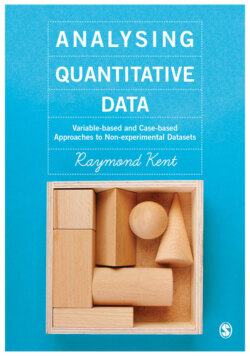Читать книгу Analysing Quantitative Data - Raymond A Kent - Страница 48
Key points and wider issues
ОглавлениеBefore engaging in the description of a dataset, or even following an initial overview of the distribution for each variable one at a time or each case one at a time, the researcher may wish to transform variables in a number of ways: for example, regrouping values on a nominal or ordered category measure to create fewer categories, creating class intervals from metric variables, computing totals or other scores from combinations of several variables, treating groups of variables as a multiple response question, upgrading or downgrading measures, handling missing values and non-committal responses, or coding open-ended questions. Some transformations might involve creating crisp or fuzzy set memberships as was explained in Chapter 1.
Data transformation is an important part of the data analysis process. There are no ‘right’ or ‘wrong’ ways of engaging in data transformation and there are usually several different ways in which it can be done. Perhaps the best strategy is what is sometimes called ‘sensitivity analysis’, whereby transformations may be tried in different ways to see how sensitive the results are to such processes. This is particularly true for how missing cases and ‘Don’t know’ answers are handled.
